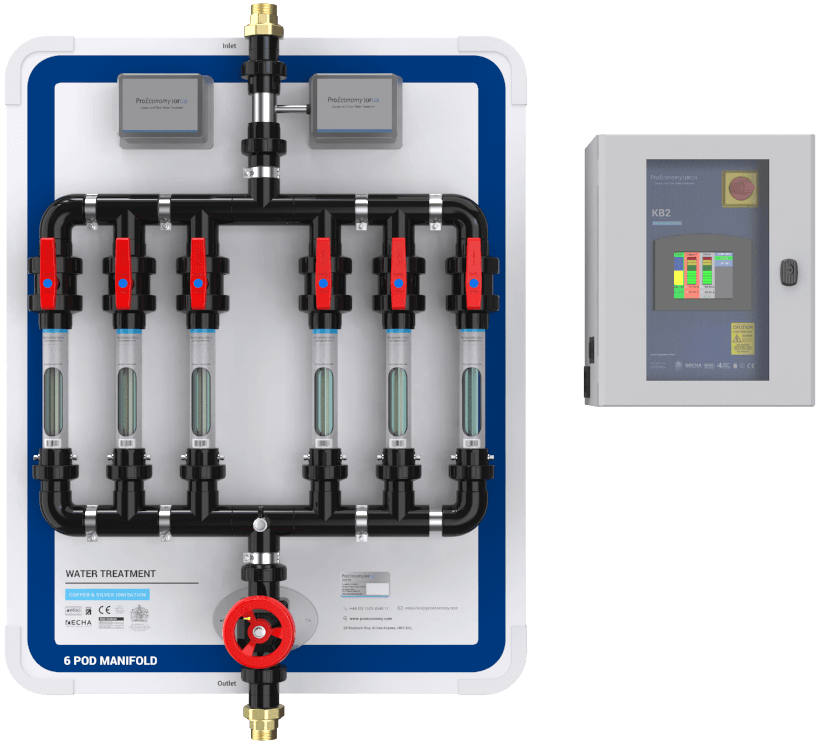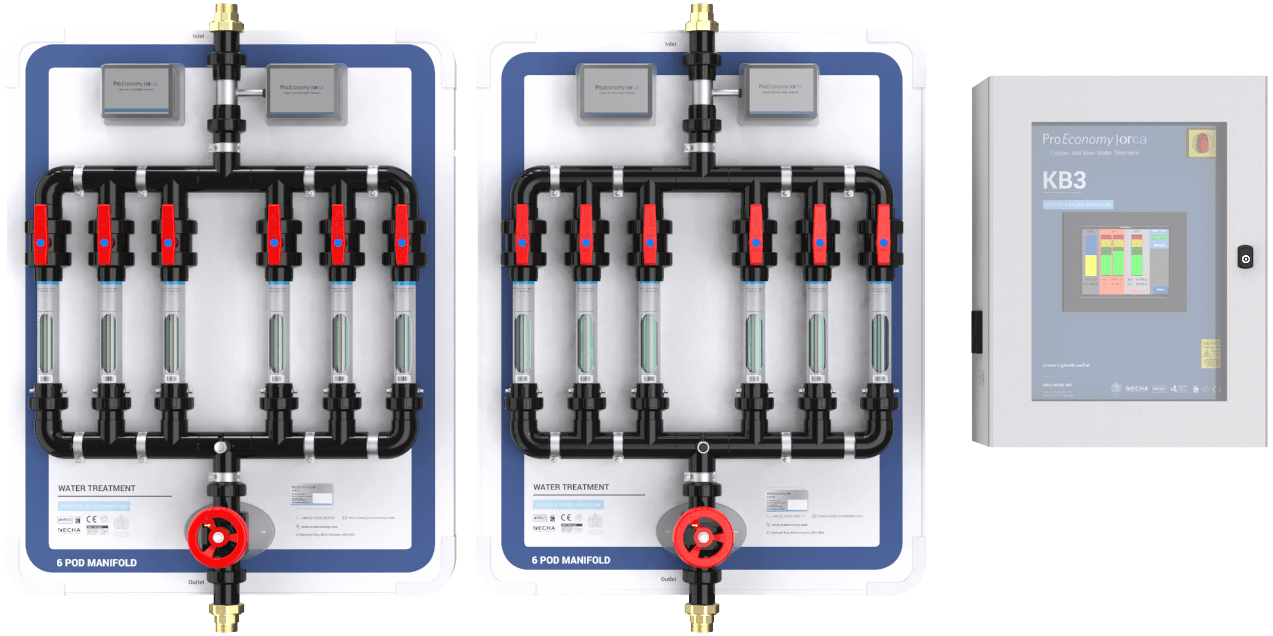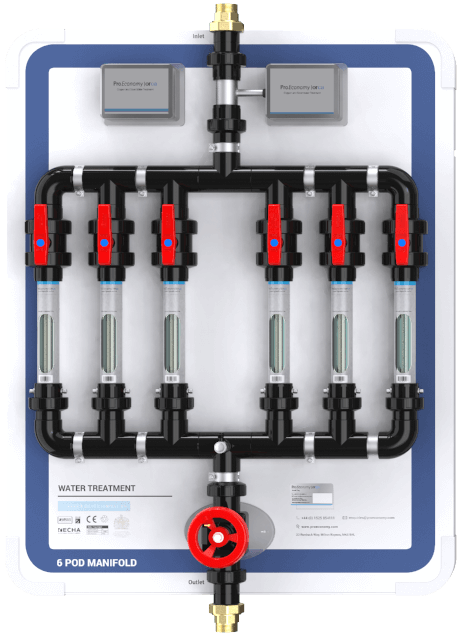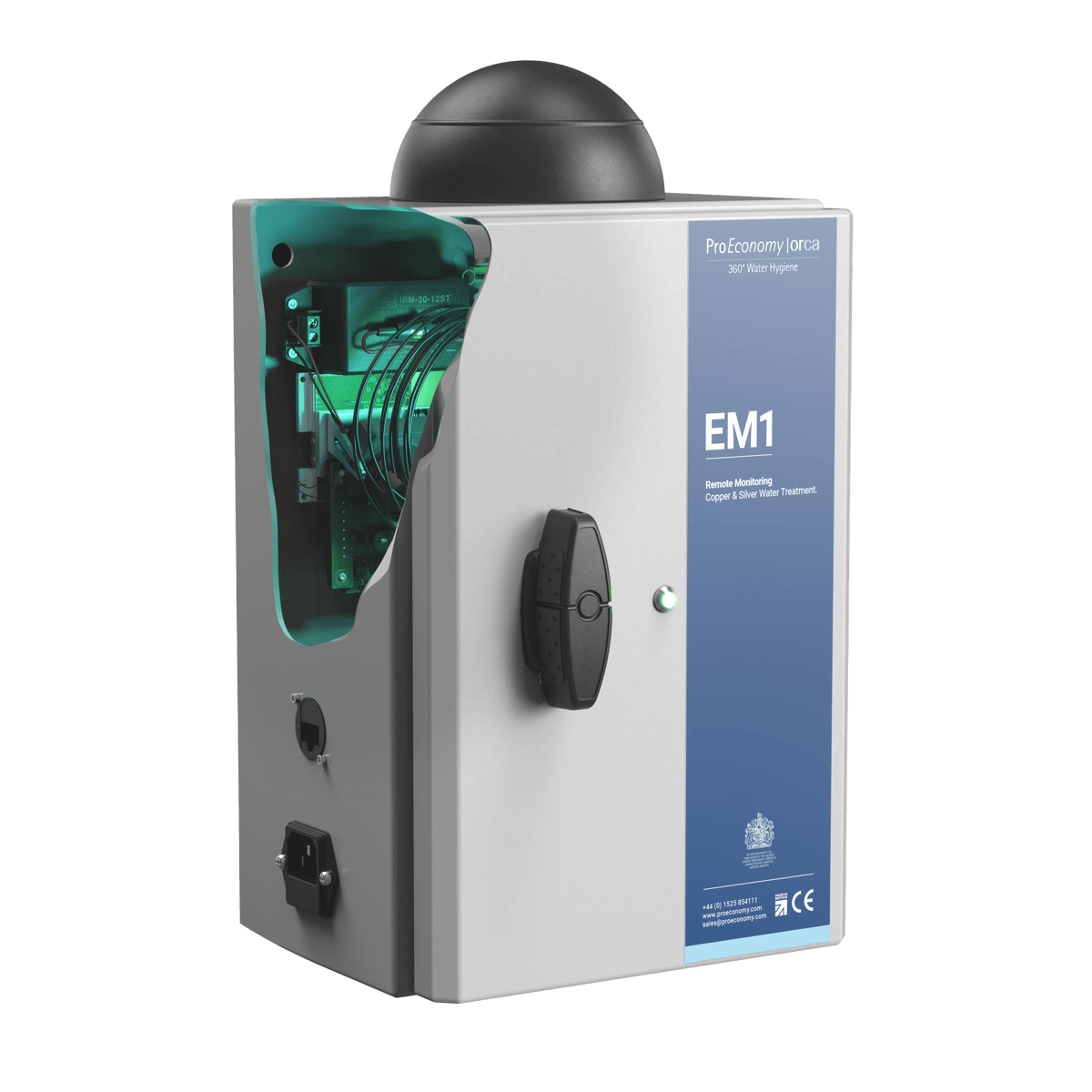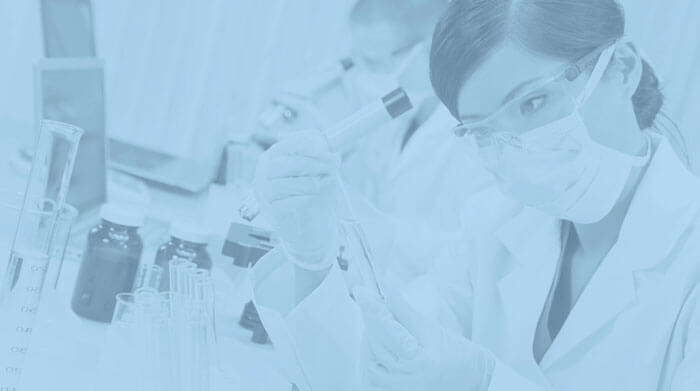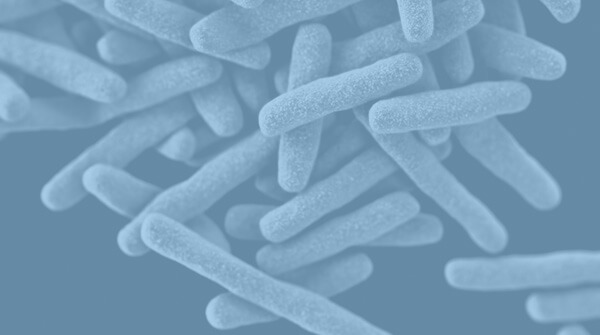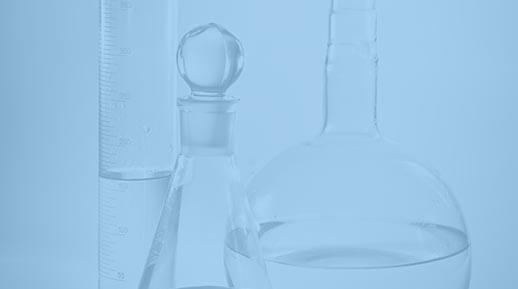Pseudomonas
Transmitted by direct contact with water, such as drinking, bathing, inhalation of water droplets, Pseudomonas is known to be highly resistant to antibiotics. Although the bacteria seldom infects healthy individuals, it can cause serious infection and sadly even death in those who are immuno-compromised, have pre-existing health conditions or weak immune systems. Therefore, it is important that sites have a proven Pseudomonas control modality in place to maintain safe water and compliance.
Where is Pseudomonas Found?
Pseudomonas is usually present in biofilms which are formed in pipes, shower heads and taps. It’s thought that the water-borne bacteria can be transmitted by drinking, bathing, contact with wounds, splashing from water outlets, inhalation of aerosols, equipment rinsed in contaminated water, etc. Reference
Unfortunately, Pseudomonas is often present in hospital environments. This is especially concerning given that hospital patients are at high risk of the infections caused by Pseudomonas due to their pre-existing health conditions and potentially weaker immune systems.
Department of Health, 2013, HTM 04-01 – Addendum: Pseudomonas aeruginosa – advice for augmented care units.
Contaminated water in a hospital setting can transmit P. aeuginosa to patients through the following ways:-
- direct contact with the water through:
- – ingesting
- – bathing
- – contact with mucous membranes or surgical site, or
- – through splashing from water outlets or basins (where the flow from the outlet causes splashback from the surface);
- – inhalation of aerosols from respiratory equipment, devices that produce an aerosol or open suctioning of wound irrigations;
- – medical devices/equipment rinsed with contaminated water;
- – indirect contact via healthcare workers’ hands following washing hands in contaminated water, from surfaces contaminated with water or from contaminated equipment such as reusable wash-bowls.”
It’s usually present in biofilm that’s formed in pipes, taps, shower heads, dead legs, etc. Reference
Mena, K.D. and Gerba, C.P., 2009, Risk Assessment of Pseudomonas aeruginosa in Water, Reviews of Environmental Contamination and Toxicology, 201, 71-115.
“Its occurrence in drinking water is probably related more to its ability to colonize biofilms in plumbing fixtures (i.e., faucets, showerheads, etc.) than its presence in the distribution system or treated drinking water.”
This biofilm can withstand temperatures of 85°C without being removed or all the Pseudomonas killed, so thermal disinfection will only have a temporary effect at best. Reference
Kisko, G. and Szabo-Szabo, O., 2011.
Biofilm removal of Pseudomonas strains using hot water sanitation.
Acta Univ. Sapientiae Alimentaria, 4, 69-79.
“Our results showed that although hot water sanitation reduced the number of Pseudomonas biofilm cells by about 3-log cycles, it left surviving cells, which enable further growth of biofilm. Therefore, it cannot be considered an effective sanitation procedure unless its application is accompanied by further mechanical or chemical sanitation.”
It’s temperature tolerant, growing best at 37°C, but able to multiply at temperatures as low as 4°C and as high as 42°C.
Incidence
Pseudomonas is more likely to infect those who are already very sick or vulnerable. Patients in critical care units, high dependency units, burns units, transplant units, haematology wards, renal units and oncology wards are especially at risk.
Although difficult to estimate, it’s believed to be responsible for about 10% of hospital acquired infections, Reference causing:
- Scepticemia (blood infection)
- Endocarditis (heart infection)
- Osteomyelitis (bone infection)
- Urinary tract infection
- Gastrointestinal disorders
- Pneumonia (70%+ mortality rate)
- Respiratory tract infections
- Meningitis (nervous system)
- Wound infections
Pseudomonas already has a high natural resistance to many antibiotics and the ability to develop resistance to other by a variety of means. Its resistance to antibiotics makes controlling Pseudomonas in water systems even more critical. Reference
Lutz, J.K. & Lee, J., 2011.
Prevalence and antimicrobial resistance of Pseudomonas aeruginosa in swimming pools and hot tubs.
Int. J. Environ. Res. Public Health, 8, 554-564.
“The temperature range in indoor recreational water is ideal for P. aeruginosa proliferation, which routinely grows in water 4-42 degrees Centigrade.”
Pseudomonas Control With The Orca
Typically, Pseudomonas is very hard to eradicate. However, at ProEconomy, our copper silver ionisation system, the Orca, is proven to successfully control Pseudomonas at a number of industrial and commercial organisations.
Pseudomonas Management With Tetras
Following 25 years of research and water sampling, we have developed a cloud based water management system that allows you to view water sample results in an easy to use online dashboard.
Health and Safety Executive, (2014) HSG274 Part 2: The control of bacteria in hot and cold water systems, para. 2, p.3
“There is a reasonably foreseeable Legionella risk in your water system if:
- water is stored or recirculated as part of your system
- the water temperature in all or some part of the system may be between 20–45 °C;
- there are deposits that can support bacterial growth, such as rust, sludge, scale and organic matter;
- it is possible for water droplets to be produced and, if so, if they can be dispersed;
- it is likely that any of your employees, contractors, visitors etc. could be exposed to any contaminated water droplets.”

